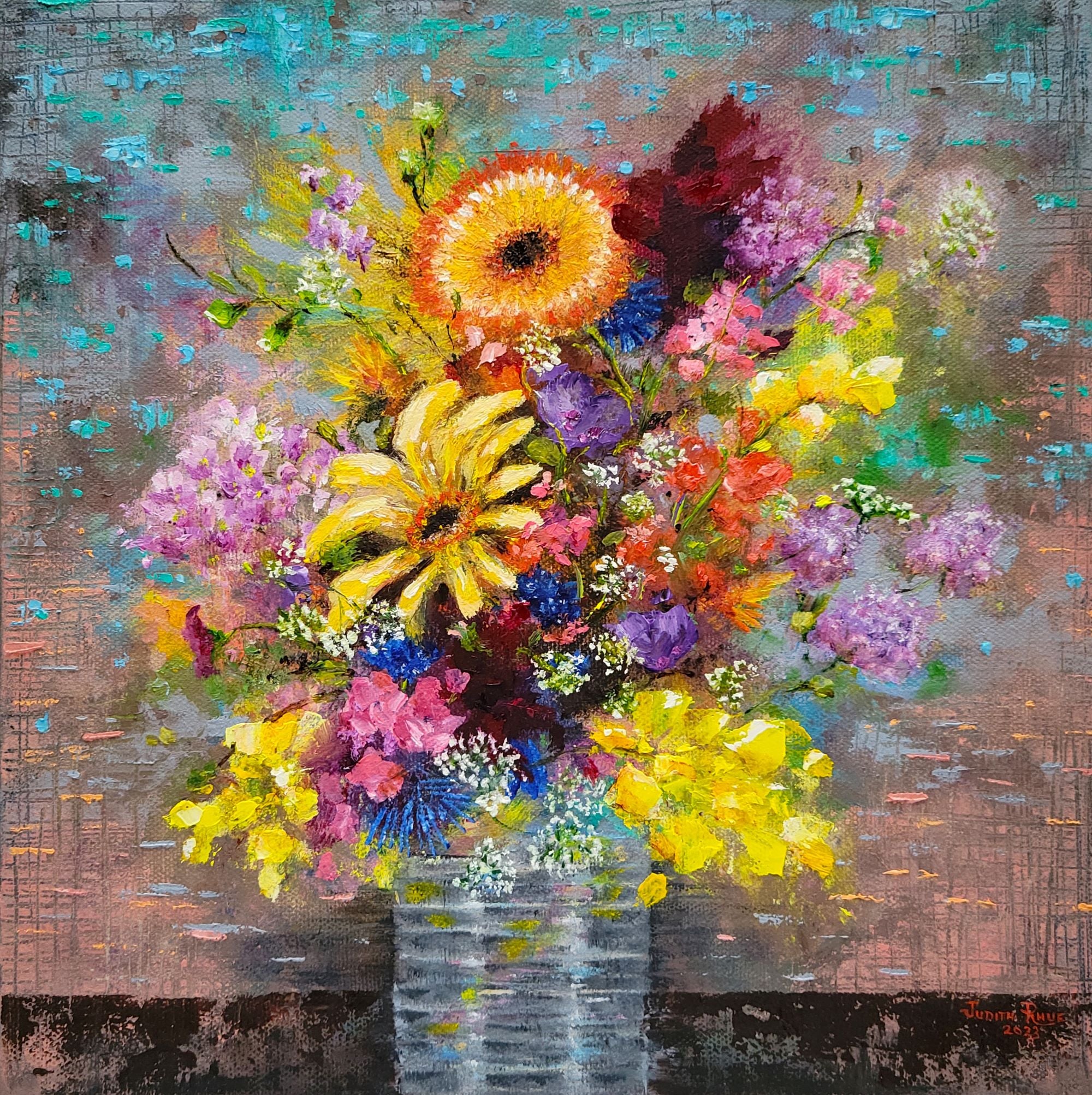The Advantages of Buying Oil Paintings: Why They Are a Timeless Investment
The benefits of getting oil paints prolong beyond simple appearances. These artworks lug historic value and cultural worth, making them beneficial enhancements to any type of collection. Their unique textures and methods add to an appealing aesthetic experience. Well-known musicians typically see their job appreciate over time, providing a prospective economic benefit. As one discovers the complex reasons for purchasing oil paints, the much deeper ramifications of such a selection ended up being progressively noticeable
The Aesthetic Charm of Oil Paintings
The attraction of oil paints hinges on their rich structures and vibrant colors, which can transform any type of room right into a remarkable environment. These artworks have a deepness that astounds audiences, attracting them into the complexities of the brushstrokes and the interaction of light and darkness. The shiny finish of oil paint boosts the aesthetic experience, enlivening scenes and subjects in a means that various other tools frequently can not achieve. Furthermore, the range of styles-- from classical to modern-- enables a diverse choice that can enhance any type of design. The psychological vibration communicated via color selections and strategies includes a layer of connection in between the viewer and the art work, making oil paintings not just decorative items, yet effective expressions of creative vision.
Historic Significance and Cultural Worth
Oil paints function as important links to an artistic heritage, showcasing techniques and styles that have actually advanced over centuries. They envelop cultural expressions and identities, mirroring the worths and narratives of their time. By getting these jobs, individuals add to the preservation of history and the recognition of diverse cultural traditions.
Creative Heritage Conservation
While many may forget the significance of artistic heritage, purchasing oil paintings plays a vital duty in maintaining historic and social narratives. These art work work as visual documents of their time, catching the essence of societal worths, practices, and historic events. By obtaining oil paintings, collectors add to the guarding of social heritages, making certain that future generations can find out and value from these imaginative expressions. Each item mirrors the distinct story of its maker and the context in which it was made. Furthermore, the ongoing admiration and display of oil paintings in different setups help to foster an understanding of diverse imaginative movements, enhancing the social landscape. Investing in oil paints is not just an economic choice however an act of social stewardship.
Social Expression and Identification
Art functions as a powerful tool for social expression and identification, mirroring the diverse narratives that shape cultures. Oil paints, specifically, capture the essence of cultural heritage, illustrating historical contexts and sociopolitical climates. Each brushstroke shares feelings and tales one-of-a-kind to specific customs, enabling customers to engage with the artist's social history. This connection fosters a sense of recognizing and belonging among different communities. Additionally, oil paintings often act as visual documentation of social development, showcasing changes in identity in time. The investment in these artworks not only sustains musicians but also preserves social traditions, making them considerable assets for enthusiasts. Ultimately, oil paints enhance one's recognition for the complexities of human experience and the rich tapestry of social identification.
Appreciation in Value Over Time

The gratitude of oil paintings in time is affected by different variables, including historic value fads that reflect altering preferences and cultural value. Additionally, the online reputation of the artist plays a crucial role in establishing the art work's market value, frequently boosting as the artist gains acknowledgment. Market demand variations can even more influence rates, making oil paints a potentially rewarding financial investment for enthusiasts.
Historic Worth Fads
As collection agencies seek to invest in tangible assets, the historical value patterns of oil paints disclose an engaging story of gratitude in time. Historically, oil paintings have actually shown a consistent upward trajectory in value, especially for works by well established musicians. Economic cycles and market need have actually affected these patterns, with periods of enhanced interest frequently resulting in considerable cost surges. Public auction documents regularly highlight the remarkable returns attained by legendary pieces, even more reinforcing the notion of oil paintings as viable long-term financial investments. In addition, social movements and shifts in enthusiast choices have sometimes spurred unexpected recognition, exposing that the art market, while somewhat unpredictable, normally prefers quality oil paints. Subsequently, recognizing these historic patterns can lead financiers in making educated decisions.
Artist Credibility Impact
While the credibility of an artist plays an important duty in the admiration of oil paintings, it is essential to acknowledge that this impact can differ considerably based upon a number of factors. Established musicians, specifically those with a significant historic or social influence, often tend to see their jobs value much more swiftly. On the other hand, lesser-known or arising artists may not experience the exact same degree of demand, affecting their artwork's worth. Additionally, the artist's ability to produce a regular body of job and keep relevance in the art globe can affect long-lasting admiration. Collection agencies typically look for jobs from artists who are identified by trusted galleries and organizations, which can better improve the worth of an oil paint gradually, making musician online reputation an essential factor to consider in investment choices.

Market Demand Variations
Exactly how do market need variations influence the appreciation of oil paints over time? The value of oil paints is inherently linked to market need, which can vary based upon financial conditions, fads, and enthusiasts' preferences. In times of economic success, need frequently increases, causing raised costs as even more buyers get in the market. Alternatively, during economic slumps, need might dwindle, causing values to stagnate and even decrease. In addition, the appeal of particular musicians can move, affecting their work's value. Eventually, recognizing market demand is crucial for investors, as well-managed collections can appreciate substantially with time, reflecting both the talent of the musician and the wider market dynamics. This interplay underscores the significance of tactical purchasing in oil painting investments.
Special Textures and Strategies
Oil paints captivate customers with their unique structures and strategies, showcasing the artist's proficiency over the medium. The thick application of paint, called impasto, creates a three-dimensional effect, inviting touch and enhancing aesthetic deepness. Artists commonly use numerous brush strokes, layering, and glazing approaches to attain luminous shades and complex information. This flexibility enables abundant contrasts and subtle shifts, making each artwork distinctly expressive. In addition, the slow-moving drying time of oil paint enables artists to mix colors perfectly, resulting in vibrant tones and smooth gradients. These techniques add to the painting's total character, making it an engaging prime focus. Each oil paint works as an indication of the creativity and skill integral in conventional artistic methods.
Adaptability in Home Design
The unique textures and strategies of oil paintings not just showcase creative ability however additionally improve their versatility in home style. These artworks can flawlessly enhance different interior designs, from modern minimalist to typical elegance. Oil paintings function as focal factors, drawing interest and triggering discussion among visitors. Their abundant colors and deepness can harmonize with different shade palettes, making them versatile to transforming style fads. In addition, the emotional resonance of oil paintings can produce atmosphere, whether it be heat in a comfy living-room or vibrancy in an imaginative office. By integrating oil paintings, house owners raise their spaces, transforming them into thoughtfully curated settings that reflect personal preference and artistic admiration. Ultimately, oil paintings are an enduring selection for improving home aesthetics.
Connection to Popular Artists
While numerous art forms can evoke adoration, acquiring oil paintings typically develops an one-of-a-kind connection to distinguished artists throughout history. Owning an oil paint permits collection agencies to involve with the creative visions of masters like Van Gogh, Monet, and Rembrandt. Each brushstroke symbolizes the artist's feelings, strategies, and intents, using insight right into their globe. This link transcends time, as each item carries a story that shows the social and historic context of its creation. Enthusiasts not only acquire a masterpiece but likewise a fragment of the musician's legacy. As art fanatics check out the stories behind these paints, they acquire a much deeper admiration for the workmanship and imaginative motions that shaped their advancement, boosting the worth of their financial investment.
Psychological and Psychological Benefits of Art
Art regularly acts as a powerful catalyst for psychological and psychological wellness. The visibility of oil paintings in a space can evoke a range of feelings, from tranquility to motivation. Their vibrant colors and detailed information offer viewers a getaway, permitting representation and consideration. Researches recommend that engaging with art can minimize tension and anxiousness, promoting a feeling of tranquility. In addition, possessing initial artwork can create a personal link, boosting feelings of pride and happiness. This emotional bond commonly brings about a deeper gratitude of one's environments, transforming a home into a home. Inevitably, the mental advantages of art expand past appearances, adding to total psychological health and enhancing life experiences.

Regularly Asked Concerns
Just how Do I Select the Right Oil Painting for My Space?
Selecting the appropriate oil painting includes taking into consideration the room's color pattern, size, and general aesthetic. One should review personal taste, the paint's psychological influence, and exactly how well it enhances existing style prior to deciding.

What Factors Impact the Worth of an Oil Paint?
The value of an oil paint is affected more info by aspects such as the musician's credibility, provenance, historical importance, rarity, condition, and market need. Each component contributes to general worth and worth amongst collectors.
Just How Can I Look After and Keep My Oil Paint?
To care for and maintain an oil painting, one should on a regular basis dirt it with a soft towel, avoid direct sunlight direct exposure, control moisture degrees, and take into consideration specialist cleansing to preserve its vibrancy and stability.
Exist Particular Musicians Recognized for Their Oil Paintings?
Numerous artists are renowned for their oil paints - oil paintings for sale. Significant figures include Vincent van Gogh, Claude Monet, and Rembrandt, each celebrated for their distinct techniques and contributions to the art world through vibrant, textured oil tools
Where Can I Acquisition Genuine Oil Paints?
Genuine oil paintings can be bought from reliable galleries, art fairs, and online platforms concentrating on fine art. Collection agencies should confirm the authenticity and provenance before buying to ensure an important investment. Historically, oil paints have shown a consistent higher trajectory in value, particularly for works by established artists. While the reputation of an artist plays a crucial function in the appreciation of oil paintings, it is essential to identify that this effect can vary considerably based on numerous variables. Oil paintings captivate customers with their distinctive structures and strategies, showcasing the musician's mastery over the medium. While several art types can stimulate appreciation, buying oil paintings usually develops a distinct link to popular musicians throughout background. The worth of an oil paint is affected by elements such as the musician's online reputation, provenance, historic importance, problem, market, and rarity demand.